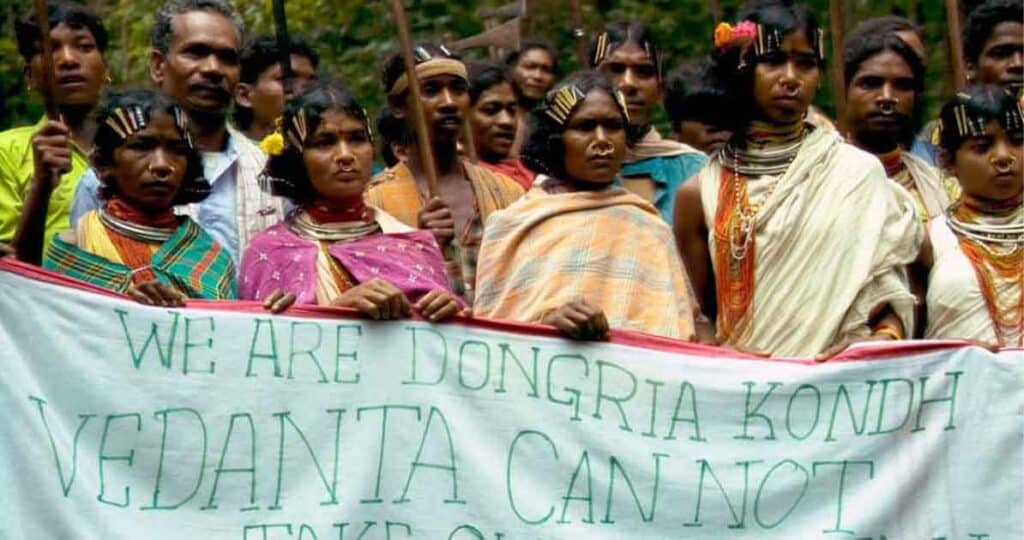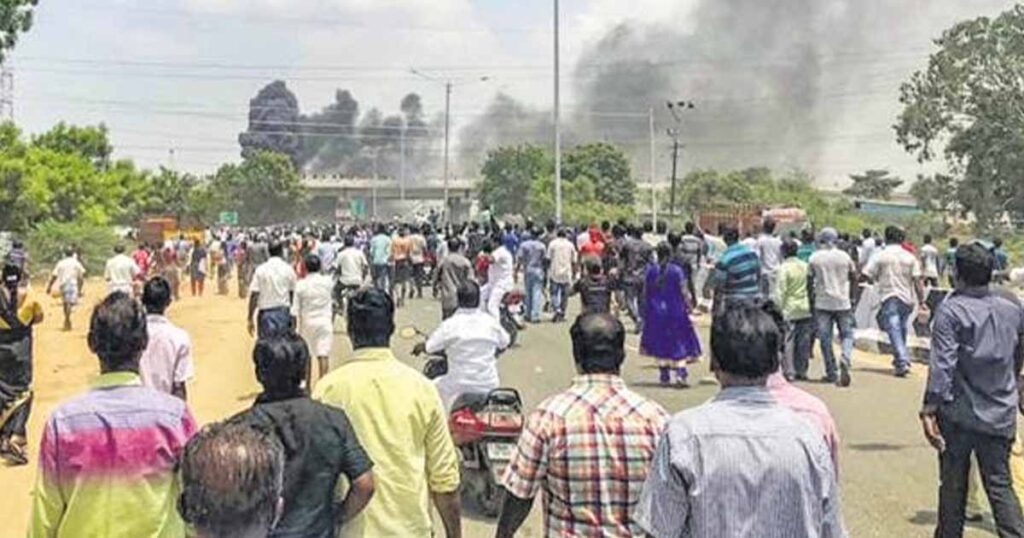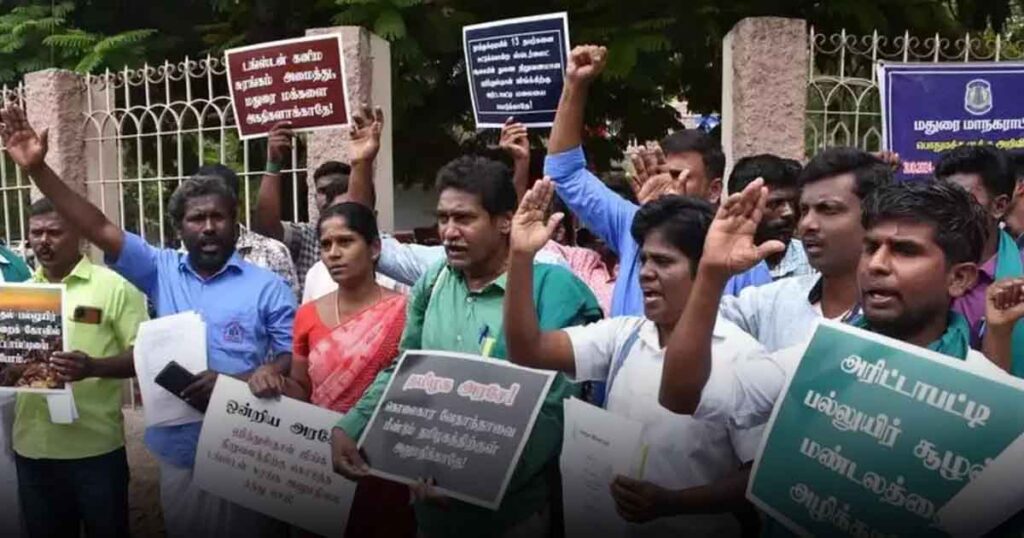In a significant show of resistance, residents of Arittapatti, a rural village in Tamil Nadu, have launched massive protests against Vedanta’s proposed tungsten mining project. The villagers, supported by environmental activists, are voicing their strong concerns over the potential environmental and ecological impact of the mining operation. They have urged the state government to deny the project’s environmental clearance, citing fears of irreversible damage to their land, water sources, and biodiversity.

This ongoing protest highlights a crucial debate in India’s development trajectory: balancing industrial progress with environmental sustainability. The Vedanta project, touted as a step toward economic growth and the production of strategic minerals like tungsten, has become a flashpoint for communities that feel their voices are not being heard in the larger economic discourse. As the protests intensify, the issue raises fundamental questions about the protection of natural resources and the rights of local communities in India’s industrial development.
The Proposed Vedanta Mining Project: A Boon or a Curse?
Vedanta, one of India’s largest mining conglomerates, plans to develop a tungsten mine in the Arittapatti area. Tungsten, a critical mineral used in electronics, defense, and manufacturing, is in high demand globally, and the project is seen by the company as an opportunity to tap into this growing market.

However, the villagers of Arittapatti, along with environmental experts, argue that the environmental risks associated with this mining operation far outweigh the potential economic benefits. The area, known for its lush greenery and rich biodiversity, is part of a critical watershed and hosts a variety of endemic species. The mining activity could not only cause deforestation but also lead to soil erosion, contamination of water bodies, and loss of agricultural productivity in the region.
Key Environmental Concerns:
- Water Pollution: The area’s rivers and streams are essential to local agriculture and domestic consumption. Environmentalists fear that mining runoff could contaminate these water sources with toxic chemicals, endangering both human and animal life.
- Deforestation: The mining project requires clearing large swathes of forest, threatening local wildlife and the natural habitat that sustains it.
- Loss of Agricultural Land: Arittapatti is a region where many farmers rely on the fertile soil for cultivation. The proximity of the mining site to agricultural land raises concerns that mining activities could reduce the area’s agricultural output, threatening the livelihoods of the villagers.
Protests and Local Sentiment
The protests in Arittapatti have taken a multi-faceted form, with villagers organizing public demonstrations, signing petitions, and holding rallies to express their opposition. The protesters are not just concerned about the environmental degradation but also about the socio-economic consequences of the mining project.
Voices from the Ground:
- Local Farmers: Many farmers fear that their lands will be seized for mining activities or will become unproductive due to the environmental damage. Their primary concern is the loss of livelihood, as agriculture is their main source of income.
- Indigenous Communities: Indigenous tribes living in and around Arittapatti, who have deep cultural and spiritual connections to the land, have expressed anger and frustration over the potential disruption of their way of life.
- Youth and Students: Many young people in the region, especially students, have joined the protests, believing that the long-term health of the environment and future generations should take precedence over short-term economic gains.
The Government’s Role: Should Environmental Concerns be Prioritized?
The protests have prompted calls for the state government to intervene and halt the project’s progress, at least until a thorough environmental impact assessment (EIA) can be conducted. Under Indian law, mining projects must undergo an EIA, which assesses the potential environmental risks and recommends mitigation strategies. However, the local community has expressed doubts about the transparency and fairness of the process, citing past instances where EIAs were bypassed or poorly conducted.
Key Issues with the Environmental Clearance Process:
- Transparency in Decision-Making: There are concerns that the government is not fully considering the voices of the local communities in the decision-making process.
- Lack of Comprehensive Environmental Impact Assessments: Critics argue that previous EIAs for similar projects have been rushed or incomplete, leading to oversight of significant environmental hazards.
- Political Pressure and Corporate Influence: There are fears that political connections or corporate lobbying may be influencing the approval process, potentially sidelining the concerns of local residents and environmentalists.
The Stakes: A Fight for Sustainable Development
At the heart of the protests is the broader issue of sustainable development. While industrial projects like Vedanta’s mining venture are seen as key drivers of economic growth, particularly in resource-rich states like Tamil Nadu, they often come at a steep environmental and social cost. The protesters argue that economic development should not come at the expense of the environment or the well-being of local communities.
In recent years, there has been a growing recognition of the need for a more sustainable approach to development, one that considers long-term environmental and social impacts. India’s government has increasingly emphasized the need for green growth, but critics argue that the country is still prioritizing industrial development over the preservation of natural resources.
The Path Forward:
- Balancing Development and Conservation: The Tamil Nadu government is now at a crossroads. It will need to weigh the benefits of the Vedanta project against the potential harm to the environment and local communities. A transparent and thorough review process is crucial to ensure that the decision made is in the best interest of all stakeholders.
- Alternative Economic Models: There is also a growing demand for exploring alternative, sustainable sources of income for the community, such as eco-tourism or organic farming, which would allow local residents to benefit from the land without compromising its integrity.
Conclusion: A Crucial Test for Environmental Justice
The protests against Vedanta’s mining project in Arittapatti represent a significant test for environmental governance in India. The outcome of this conflict could set a precedent for how industrial development and environmental protection can coexist in the country’s rapidly industrializing landscape.
As the protests continue and the issue gains national attention, the pressure on the Tamil Nadu government to act responsibly and transparently will only increase. The villagers of Arittapatti are not only fighting for their land and livelihoods—they are standing up for the future of their environment and the principles of sustainable development. Whether the state government will heed their concerns remains to be seen, but this is a critical moment for all stakeholders involved.






